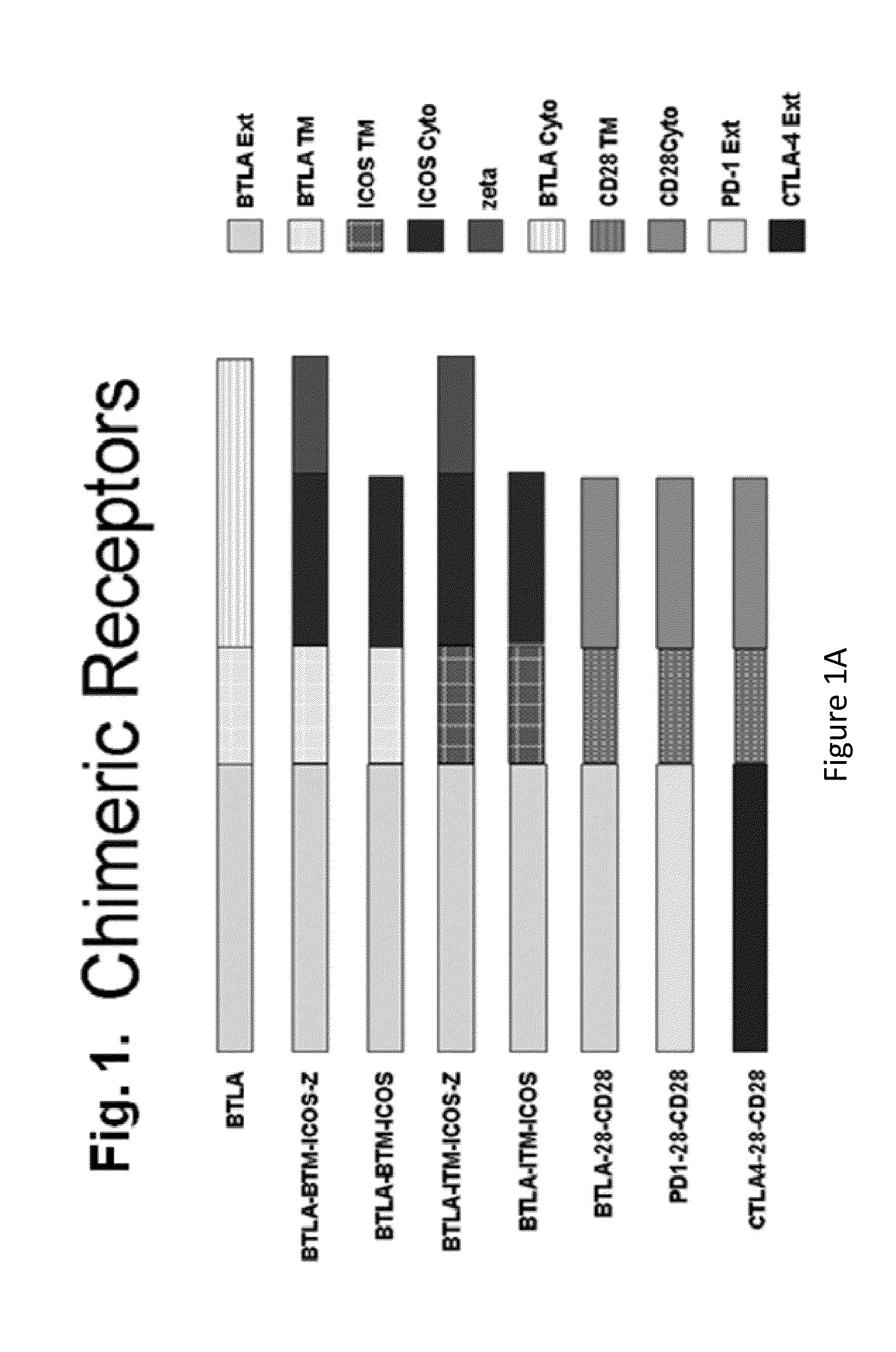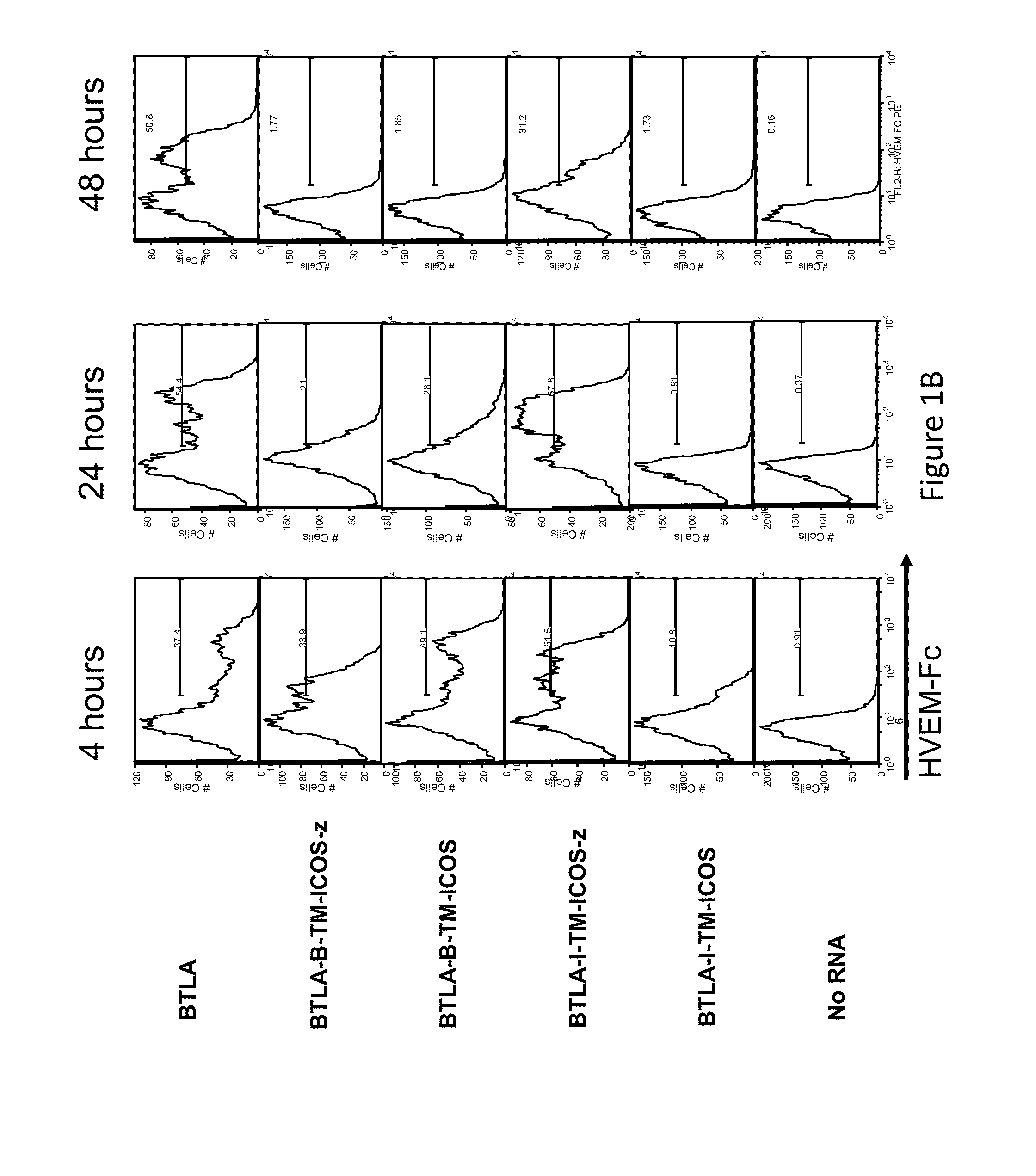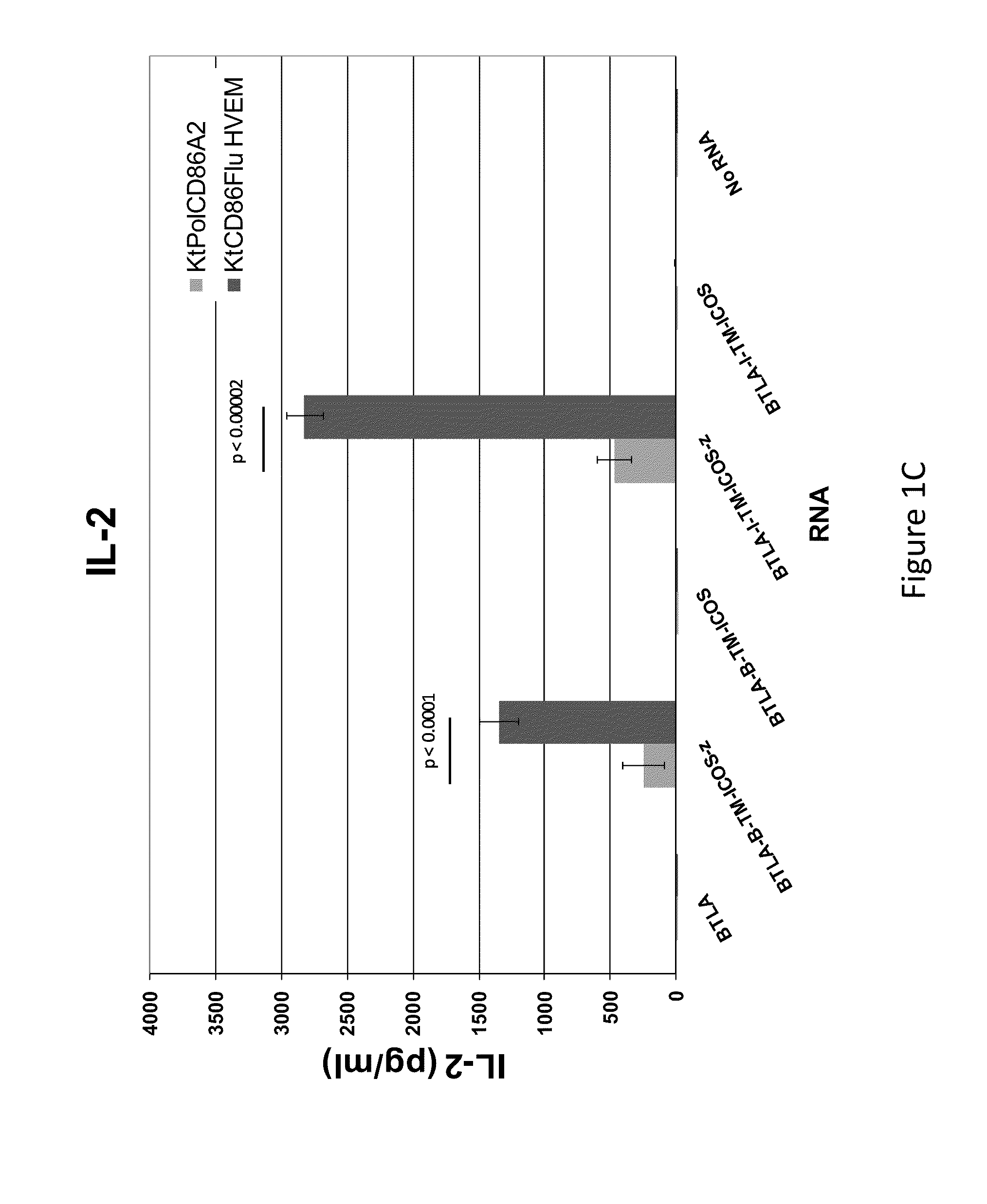Switch costimulatory receptors
a costimulatory receptor and switch technology, applied in the field of immune system, can solve problems such as autoimmunity or systemic inflammatory syndromes
- Summary
- Abstract
- Description
- Claims
- Application Information
AI Technical Summary
Benefits of technology
Problems solved by technology
Method used
Image
Examples
experimental examples
[0153]The invention is further described in detail by reference to the following experimental examples. These examples are provided for purposes of illustration only, and are not intended to be limiting unless otherwise specified. Thus, the invention should in no way be construed as being limited to the following examples, but rather, should be construed to encompass any and all variations which become evident as a result of the teaching provided herein.
[0154]Without further description, it is believed that one of ordinary skill in the art can, using the preceding description and the following illustrative examples, make and utilize the compounds of the present invention and practice the claimed methods. The following working examples therefore, specifically point out the preferred embodiments of the present invention, and are not to be construed as limiting in any way the remainder of the disclosure.
example 1
Switch Receptors
[0155]The results presented herein demonstrate that chimeric receptors can be engineered to convert negative signals into positive signals on T cells. Experiments were designed to develop a method that avoids inhibition of a tumor inhibitory factor systemically and therefore the entire immune system. Briefly, T cells were engineered to express a chimeric receptor that encoded the PD-1 extracellular domain (without the inhibitory PD-1 domain) and a stimulatory CD28 or ICOS signaling domain. The orientation of the chimeric receptor placed the PD-1 extracellular domain outside the cell and the CD28 or ICOS stimulatory domain inside the T cell. Thus the interaction of T cells with tumor antigens in the tumor microenvironment is positively influenced upon the engagement of PD-1 ligands because the signal in the cell is delivered by the CD28 or ICOS signaling endodomain rather than the native inhibitory PD-1 endodomain.
[0156]The materials and methods employed in these expe...
PUM
| Property | Measurement | Unit |
|---|---|---|
| time | aaaaa | aaaaa |
| length nucleotide sequence | aaaaa | aaaaa |
| volume | aaaaa | aaaaa |
Abstract
Description
Claims
Application Information
 Login to View More
Login to View More - R&D
- Intellectual Property
- Life Sciences
- Materials
- Tech Scout
- Unparalleled Data Quality
- Higher Quality Content
- 60% Fewer Hallucinations
Browse by: Latest US Patents, China's latest patents, Technical Efficacy Thesaurus, Application Domain, Technology Topic, Popular Technical Reports.
© 2025 PatSnap. All rights reserved.Legal|Privacy policy|Modern Slavery Act Transparency Statement|Sitemap|About US| Contact US: help@patsnap.com



